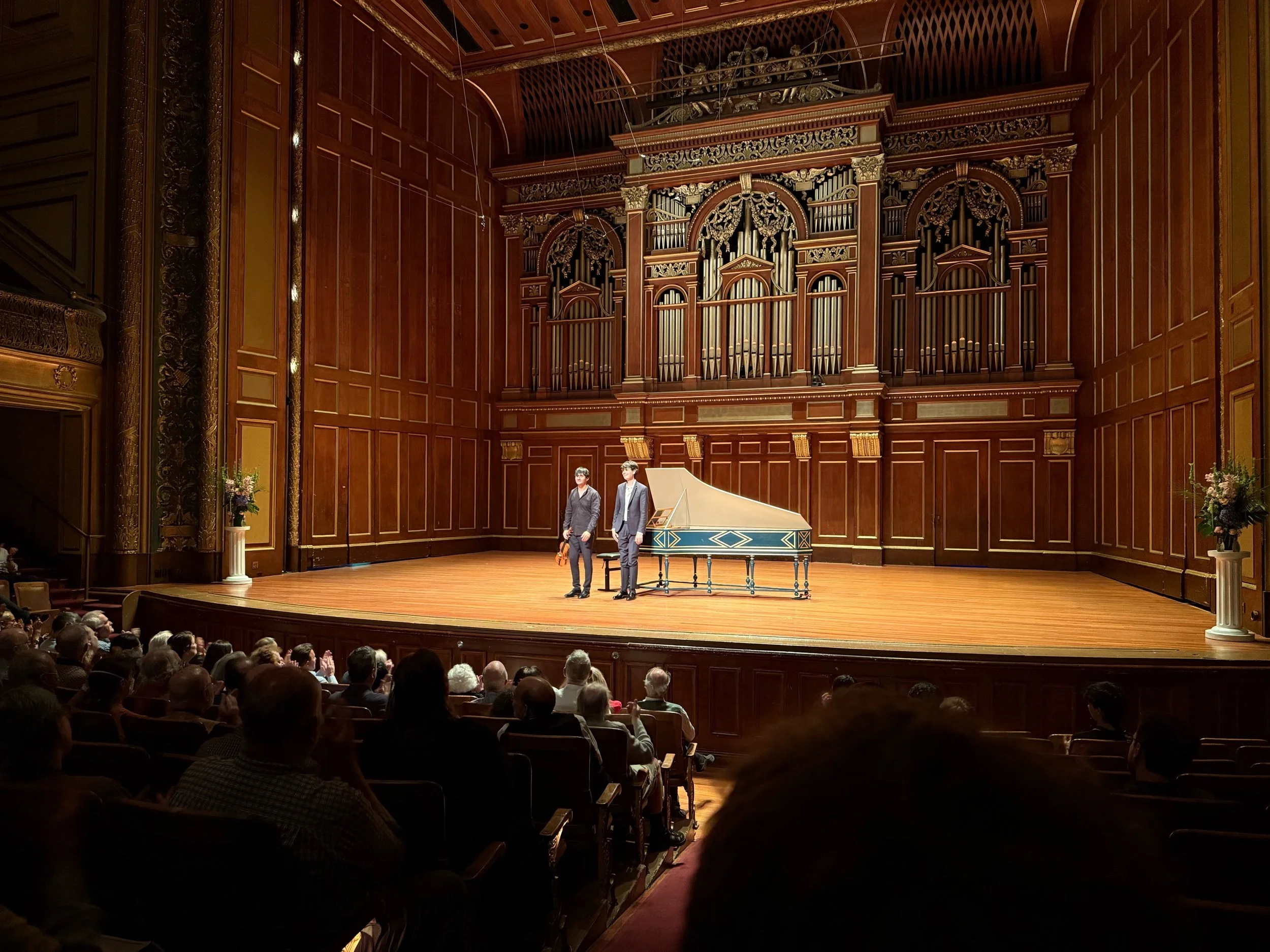Théotime Langlois de Swarte with Justin Taylor - BEMF 2025
This duo performed Thursday night at Jordan Hall at the New England Conservatory of Music. The hall was empty, save for a green and gold-decorated harpsichord. The program focused on French baroque music, with additions from Corelli, Eccles, Matteis, and a harpsichord solo by J.S. Bach. The two gentlemen shared the single music score positioned on the harpsichord, putting them close together for most of the evening.
If there were any generalizations to be made, a few things stuck out. First, that Taylor has been well-trained to follow another performer. You’ll see this in videos of them performing as well, where Taylor’s eyes are nearly as much on TLdS as they are on the score. Second, that both musicians felt very comfortable with this repertoire and this wasn’t their first time playing it. Third, TLdS gets most excited with passages where he can park his fingers across the four strings and go a little wild with his bowing. The effect is not his, per se, but it came up a lot in both the programmed pieces as well as the duo’s three encores. Finally, Jordan Hall is a bit too big for a harpsichord and violin. Details in the keyboard playing were sometimes difficult to hear, but worse off was the quality of TLdS’s violin, which did not present in the hall as bright or piercing. It had a darker, tarnished kind of sound, which I think has beauty. There was one passage where TLdS had started to play, but there was no sound to be heard until he applied stronger dynamics and played over to a higher string.
There was no piece presented—including what I might. call TLdS favorites, including the Mad Lover by Eccles or Corelli’s La Folia—that wasn’t sensitively and expressively presented by the duo. Taylor’s playing was quite extravagant at times, including in the slow movement of one of Bach’s concerto transcriptions from Marcello, which served as the only solo piece for Taylor, which acted as a prelude to the program’s final Corelli.
What we did hear from this duo which often does not come out in their recordings is their willingness to bend the beat, and let the exuberance of the music push them faster. Which, of course, is different than young musicians who speed up by mistake. This was an effective kind of rubato applied in multiple pieces. The other aspect was their willingness to extemporize, especially so in the three encore pieces. So yes—TLdS especially so has the means to play beyond the printed page, and not just in a trite way.
The overall acoustic of the theater aside, the concert was well considered and expertly played. Well worth my travels to Boston to finally hear these two in person. I look forward later today to hear Taylor in his own recital at the harpsichord.






